It has now become a rather standard exercise, with availble technology, to construct graphs to consider the equation
and to overlay several graphs of
for different values of a, b, or c as the other two are held constant. From these graphs discussion of the patterns for the roots of
can be followed.
Investigation1 through grapghs in the xy plane
Let's consider the graphs of
for b = -3, -2, -1, 0, 1, 2, 3.
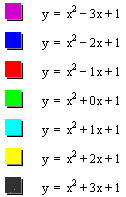
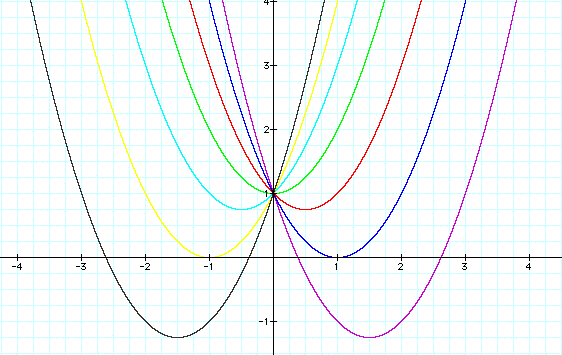
1) The parabola always passes through the same point (0,1) on the y-axis
2) For b < -2
the parabola will intersect the x-axis in two points with positive x values
(i.e. the original equation will have two real roots, both positive)
3) For b = -2
the parabola is tangent to the x-axis and so the original equation has one real and positive root(i.e. x=1) at the point of tangency
4) For -2 < b < 2
the parabola does not intersect the x-axis -- the original equation has no real roots
5) For b = 2
the parabola is tangent to the x-axis (one real negative root x=-1)
6) For b > 2
the parabola will intersect the x-axis in two points with negative x values
(i.e. the original equation will have two real roots, both negative)
Further through an exploration
we can show that the locus of vertice is the parabola
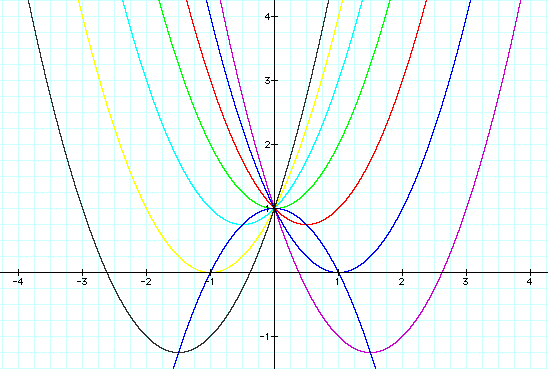
Investigation2 through grapghs in the xb plane
Let's consider graphing this relation
We get the following graph
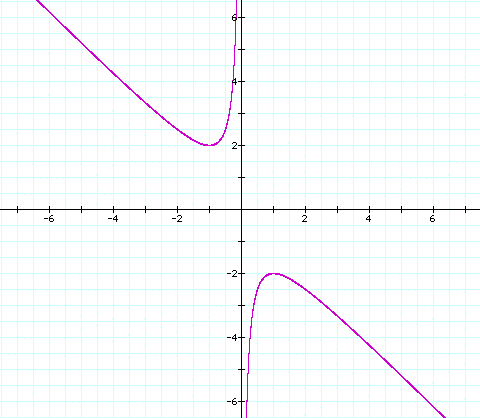
If we take any particular value of b, say b = 3, and overlay this equation on the graph we add a line parallel to the x-axis.
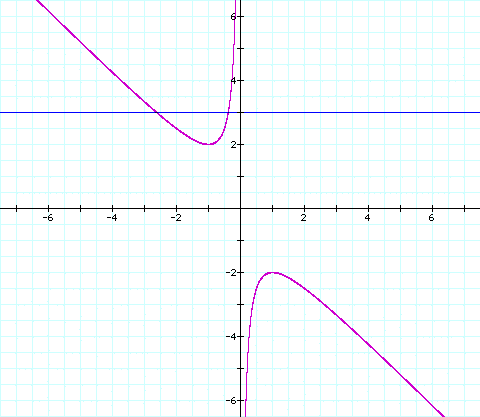
If the line b=some value intersects the curve in the xb plane the intersection points correspond to the roots of the original equation for that value of b.
For each value of b we select
1) For b > 2
we get two negative real roots of the original equation
2) For b = 2
we get one negative real root
3) For -2 < b < 2
we get no real roots
4) For b = -2
we get one positive real root
5) For b < -2
we get two positive real roots
Investigation3 through grapghs in the xc plane
Let's consider graphing this relation
We get the following graph
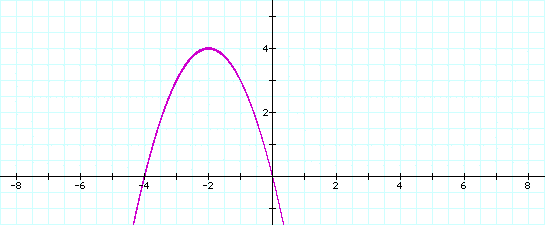
If we take any particular value of c, say c = 3, and overlay this equation on the graph we add a line parallel to the x-axis.
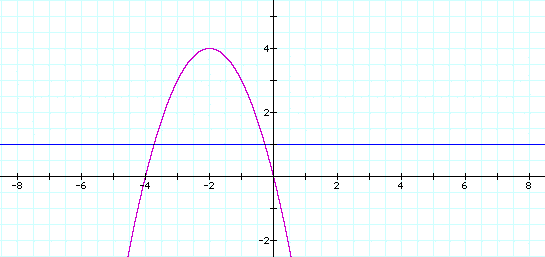
For each value of c we select,
its graph will be a line crossing the parabola in 0, 1, or 2 points -- the intersections being at the roots of the orignal equation at that value of c
1) For c > 4
we get no real roots
2) For c = 4
we get one negative real root
3) For 0 < c < 4
we get two negative real roots
4) For c = 0
we get 0 and -4 as the roots
5) For c < 0
we get one negative real root and one positive root
Return to Hyungsook's homepage